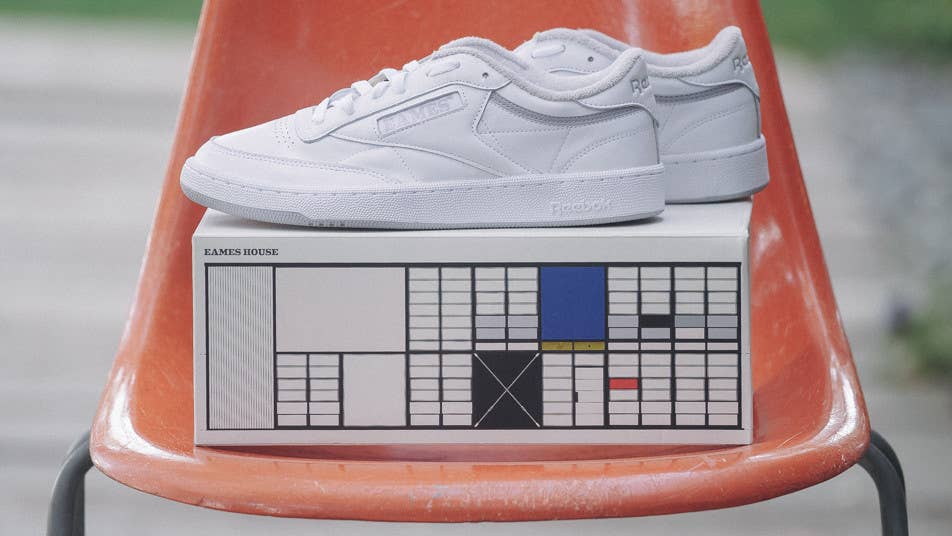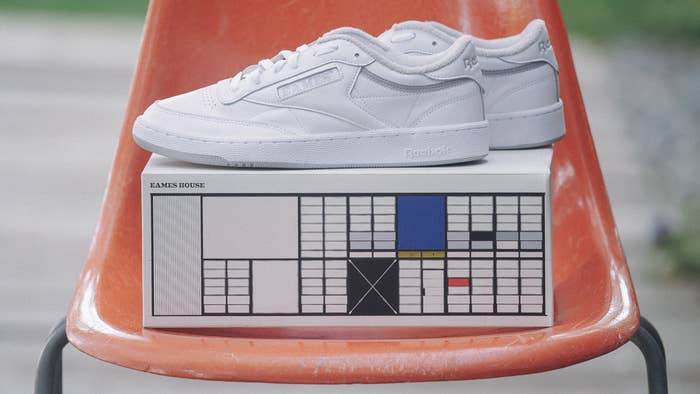
You can’t wear sneakers in the Eames House. The building is constructed from off-the-shelf parts and filled with the spirit of Charles and Ray Eames, the husband and wife team whose work enriched the field of design in the 20th century with a sense of charm and human appeal. For the rare visitor granted entry into the landmark home, the only footwear allowed to cross the threshold is socks. And even then, one’s own socks are not permitted.
There is a ritual at the door where, between patches of the Pacific sun and eucalyptus tree shade, the guest removes their socks and selects a pair from a basket of freshly laundered white socks to wear inside. It is a measure taken to preserve the home, an architectural icon tucked back on a hill overlooking the ocean in Los Angeles’ Pacific Palisades neighborhood.
The space inside is still but not frozen, a testament to the warmth of the Eameses’ work. It’s kept in a fixed state not to arrest its energy but to ensure it reverberates. There are Noguchi lamps and trinkets collected from their travels. The rectangular panels on the facade wink with color. These days, the most salient shoe out front is Reebok.
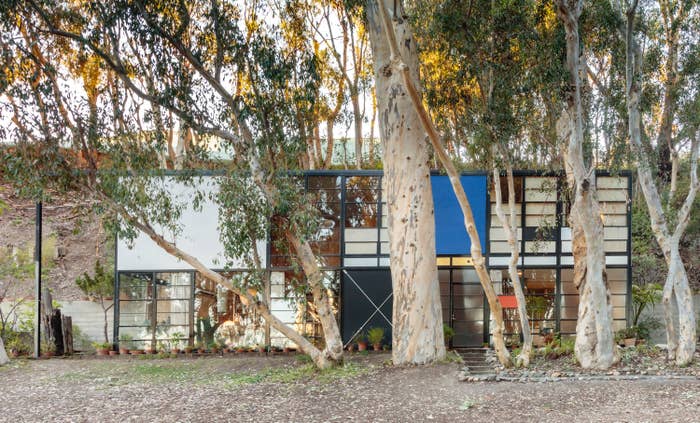
The sneaker company has embarked on a collaboration with Eames Office, the still-running design firm of the late Eameses. The couple built the house (also known as Case Study House No. 8) in 1949 and lived there for the rest of their lives. Their work includes iconic chairs, films, toys, and buildings that centered purpose and play with the aim of introducing more pleasure to life. The Reebok collaboration is an extension of this, with the sportswear brand hosting the firm as a guest in the culture of collectible shoes.
The sneakers’ rollout began last week with the arrival of two pairs, one black and one white, of the Club C at $120 each. The release will continue with wider distribution on Oct. 21 with more colorways to come. The shoes, aided on the Reebok side by designer Nate Chang, have Eames Office logos, a colorful burst on the insoles, and a restored internal arch band with a custom Eames x Reebok print. They come in a box that looks like the famous home. The first two colorways are like pieces of a uniform; their understated looks described by Reebok as “made for everyday wear.”
They will be followed by two bolder takes on the Club C that wear the art of Ray Eames on their uppers—release dates for these have not been announced. There is also a friends-and-family spin on the shoe, a cream white Club C with a colorful Eames hit on the side window and the signatures of Charles and Ray on the insoles.
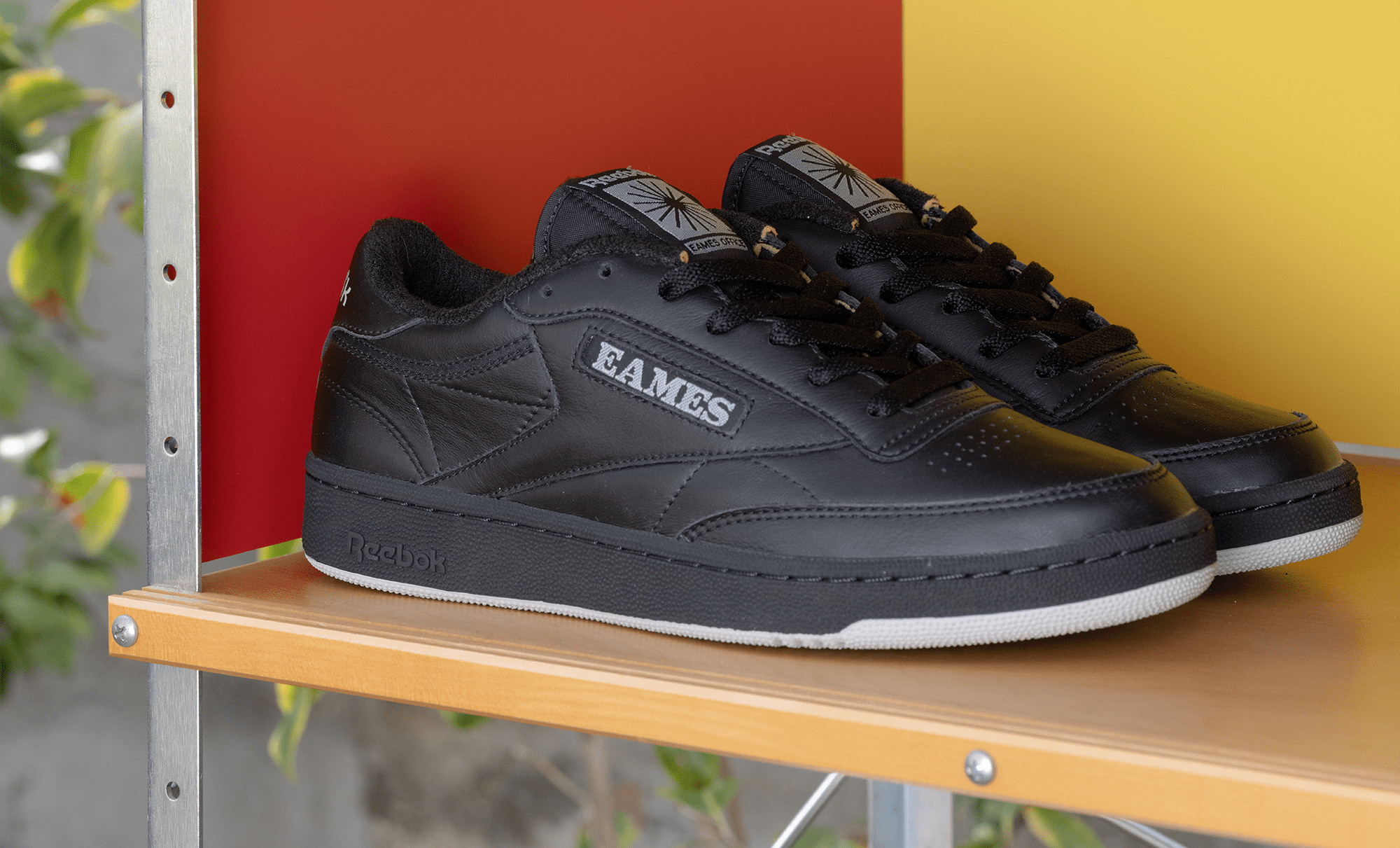
They are distant contributors to the shoes, their legacies informing the project. More immediately involved is Reebok senior global product marketing manager Leo Gamboa, who orchestrated the collaboration and first pitched Eames Office on working with Reebok. Gamboa describes the partnership as one reflecting the shifting interests of young people looking to make a statement about their identity with the things they own.
“Kids, instead of buying a pair of shoes, they’re buying a shell chair on eBay,” he says. “They’re looking for that type of transition.”
It’s a path he’s personally familiar with, having bought his first Eames chair almost a decade back on Craigslist. Much about the project feels personal to Gamboa, who made the pilgrimage to the house first as a fan.
“My last time here, I was alone,” he says, standing on the Case Study property. “I was asking strangers to take pictures of me in front of the house.”
During that visit he befriended Joan Mace, then the house manager for the Eames Foundation, and explained to her how he felt Reebok could mix in with the legacy of Charles and Ray. He went from that conversation to a connection through Zoom calls with the Eames team. On them he’d swivel his laptop around the room to show off the furniture he owns.
Though the collaboration will resonate most with people who, like Gamboa, already understand the Eames story, they are not its exclusive audience.
Eames Demetrios, the grandson of Charles and Ray and director of Eames Office, is not interested in setting up guardrails around who is allowed to participate. He believes the project should not only satisfy existing fans of the brand, but also usher more in.
“You shouldn’t have to take a test to enjoy this,” he says, giving a note on gatekeeping that sneaker collectors would do well to consider. “People respond on a deep level to it.”
The sneakers are meant to conjure the same joy as any other Eames creation. Contributing to that multimedia body of work has stirred emotions for Gamboa, who said he felt like crying when he walked the grounds of the Eames House on the day Reebok held an invite-only dinner there. Erin Narloch, Reebok’s senior archive manager, said that being inside the house was one of only two times in her life that an interaction with art moved her to tears.
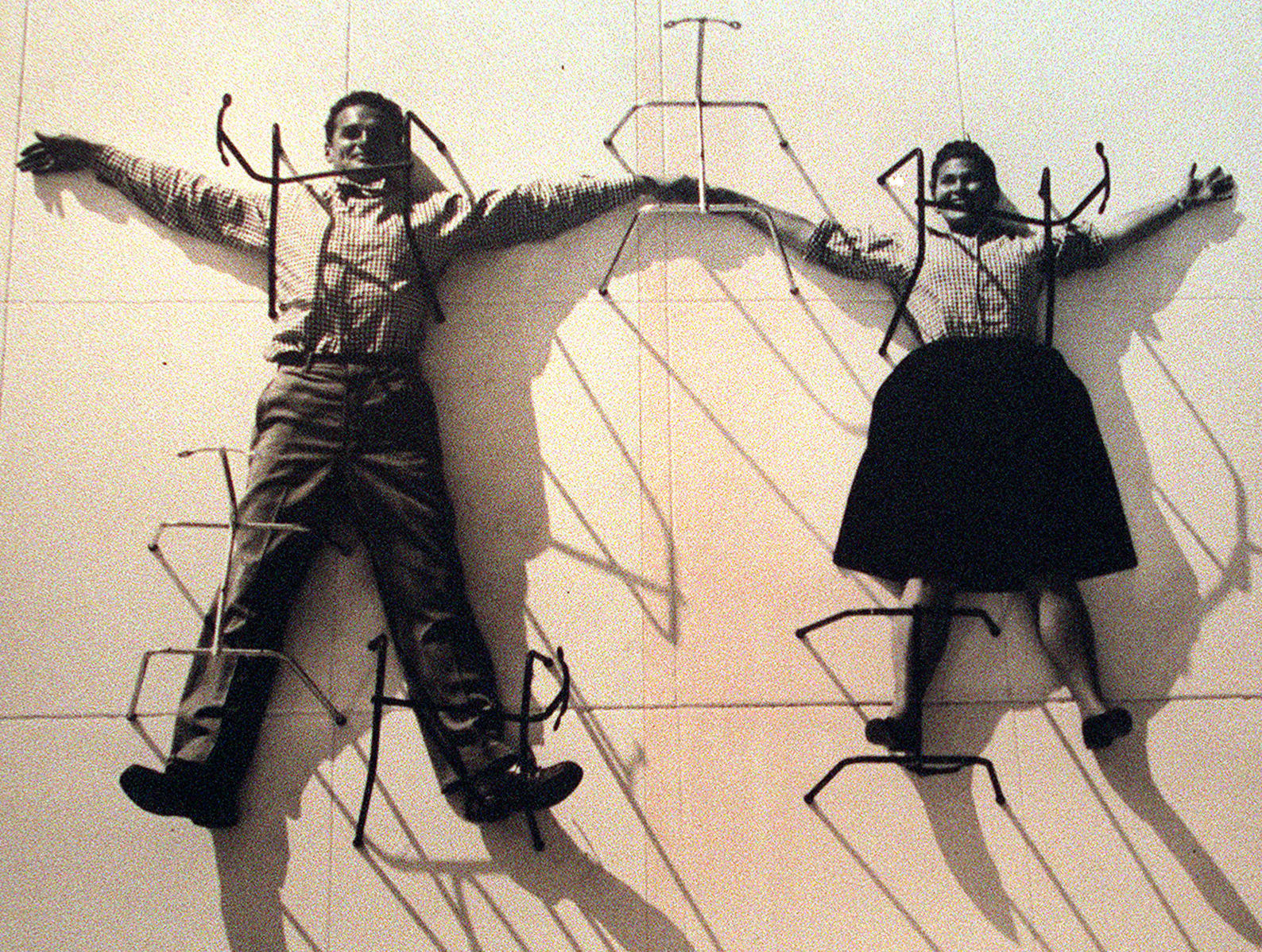
The Club Cs may not be moving in the same way the house is, but they represent a version of Eames design that is repeatable in a different way. It gives the Eames mark a more viral reach, one where the beauty of the object is fortified through repetition. This is in line with the doctrine of Charles and Ray, who aimed to make “the best for the most for the least.”
It is not entirely democratic—the collaboration is still a series of limited sneaker releases—but it’s more accessible than an Eames lounge chair or a trip to the house for most.
“They are a way for people to have an Eames experience in their own hands,” says Demetrios of the Reeboks. “And you might say, ‘Well, they didn’t design the sneaker.’ That’s true, but there’s something very authentic about the Club C. I wasn’t sophisticated enough to fully grasp it at the time.”
Weighing which designs—a retro Reebok sneaker or a Uniqlo tee—are deserving of the Eames mark is the kind of judgment Demetrios has to make as one of the chief stewards of his family legacy. Collaborations like those are complementary to the more primary source material, like exhibitions of Charles and Ray’s work or a first-time sale of a radio they designed but never manufactured.
There’s a natural overlap between the pressure to perfect this balance and the kind that sportswear brands have to consider when re-issuing or updating a retro model. Consumers in both camps are fastidious over specifications and dimension: If a sneaker from the 1980s is re-released in the 2020s with a shape diverging from the original, someone on the internet will lodge a complaint. The same applies to any project coming from Eames Office.
“He’s got a large fan base and they want nothing but the best from the Eames name,” Gamboa says.
This includes both of the names. Demetrios points out that the husband-and-wife team of Charles and Ray were collaborators with each other, so anything Eames is the result of their shared input. Ray does get bigger billing on the sneakers, though—her Dot Pattern textile print from 1947 taking over one pair and her Composition painting from 1939 covering another.
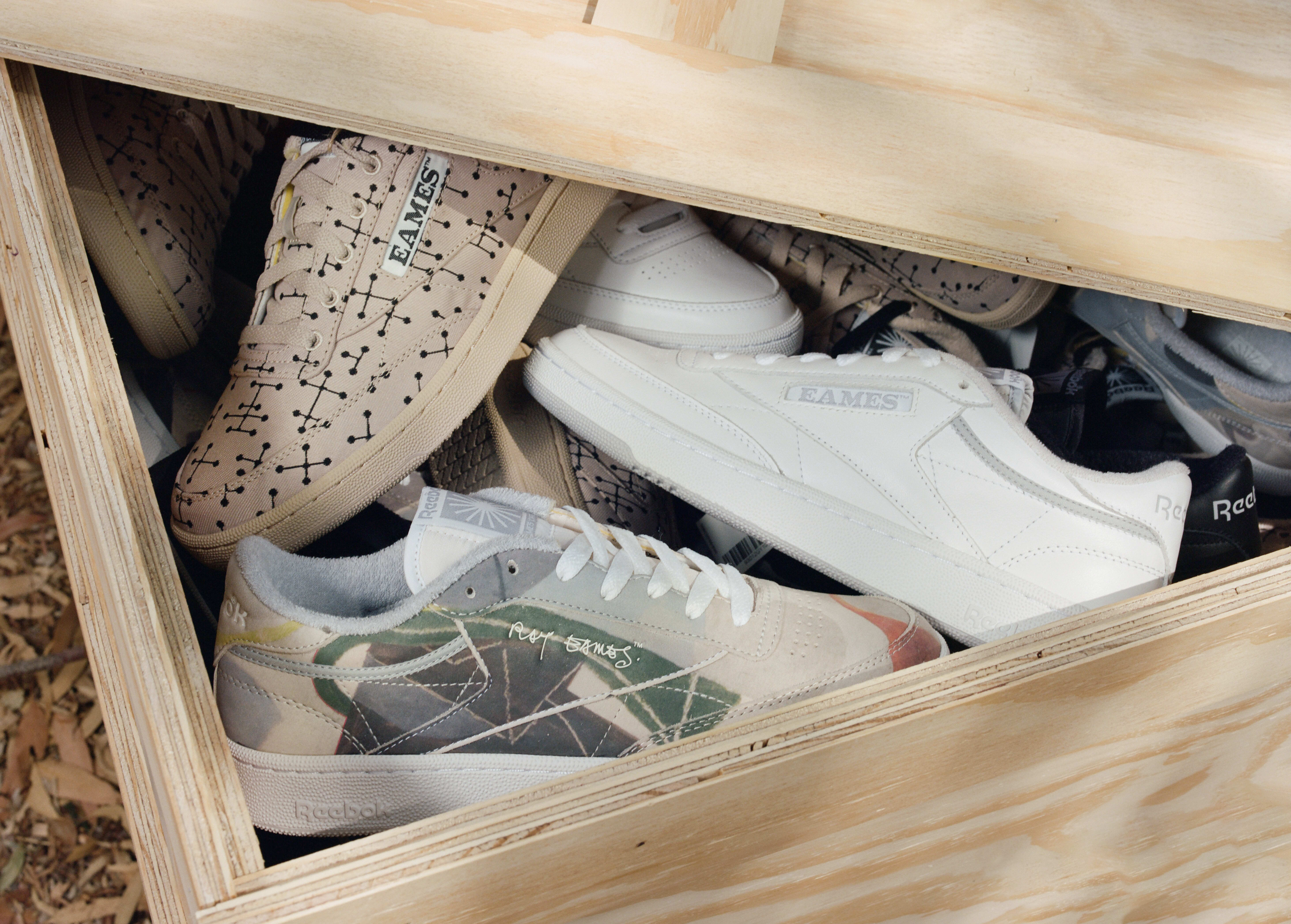
The reference to these works was an exciting aspect for Narloch, the archivist, whose domain of white gloves for handling sneakers mirrors that of white socks for stepping through mid-century modern architecture.
“[Leo] and I worked on a presentation to pitch it internally, also to position the story, Ray’s story, as being very important to tell from Reebok,” she says. “Being a women’s-first brand and having the opportunity to tell the story of one of the most significant female designers, geniuses, of the last 100-years plus.”
In talking to the people involved with the project, one gets the sense that there are still more stories to tell. Demetrios hints that other sneakers are coming, some of which may align with his preferences for more colorful gear. (He also reveals that other sneaker brands have tried, unsuccessfully, to work with Eames, but declines to share which ones.) Gamboa has worn a wood-grain pair that hasn’t yet seen a retail release or even a public unveiling.
The evolution of the Reebok models used as the base for the project has a parallel in the Eames approach to design, which sees value in development through generational use. Sneakers like the Club C that exist in the brand’s archive have never been static––they are updated by different cultures and collaborators over the course of decades. Their purpose as markers of identity, as something more than just tennis shoes, is one generated through real folk tradition.
Even the packaging for the collaboration aligns with an aphorism from Charles Eames, who said that a good designer should be like a thoughtful host, anticipating the needs of their guest. The shoe box is a literal home. The wearers are welcomed in.
“They go on this journey,” Eames says, “and we hope by the end that they will learn quite a bit. And there’ll be a little more delight in their lives.”
The Reebok project invites a new generation of Eames devotees in, this time with sneakers on.

